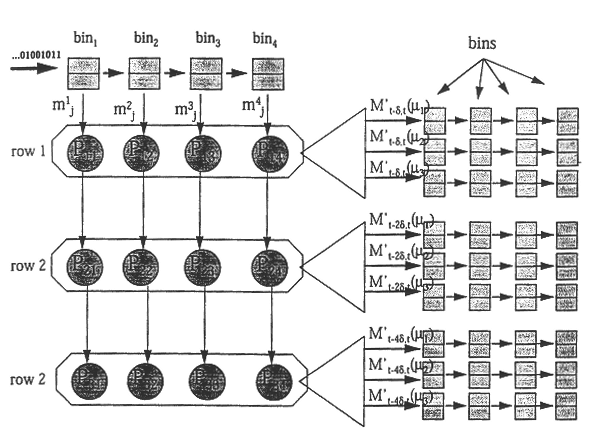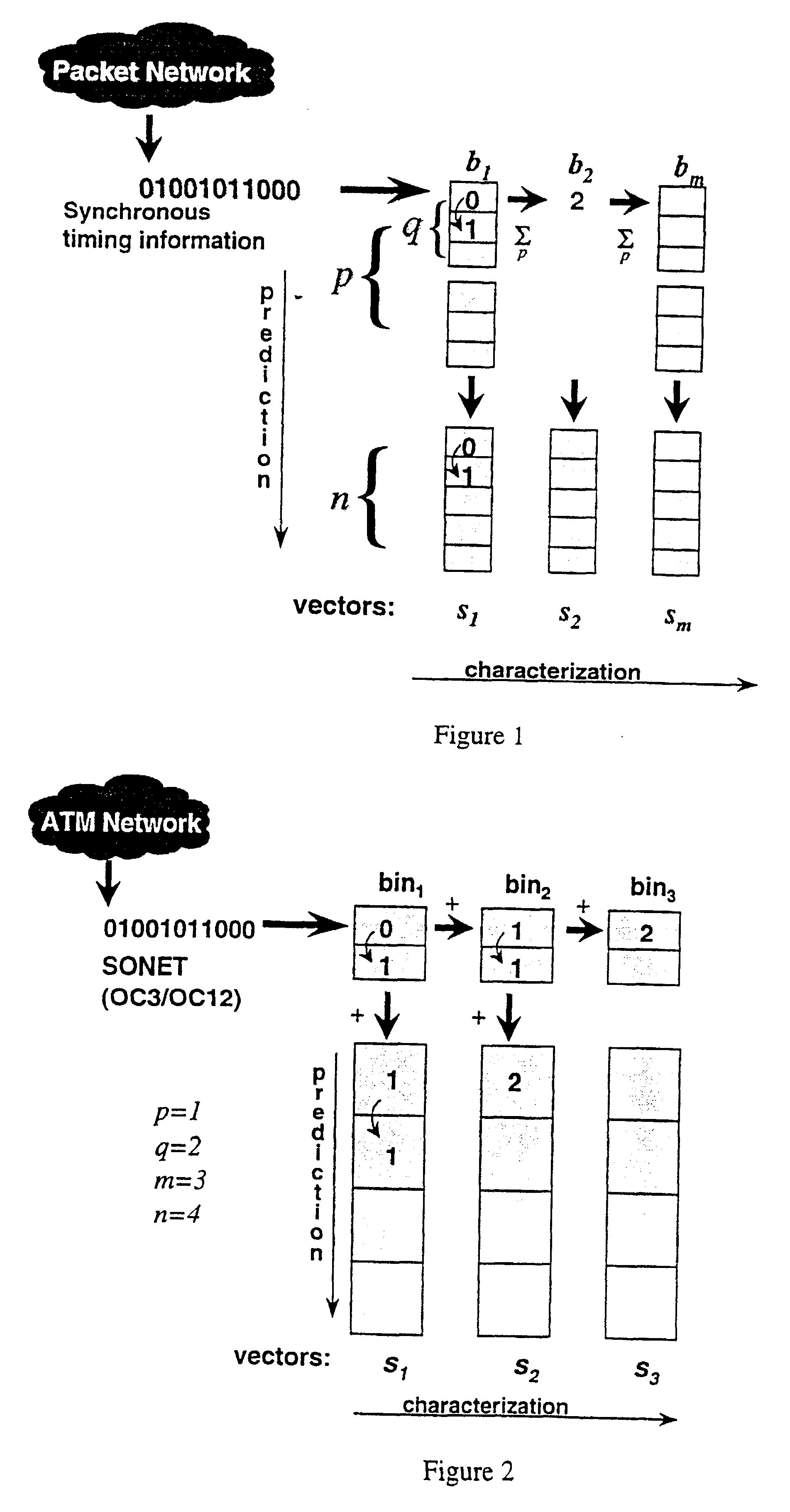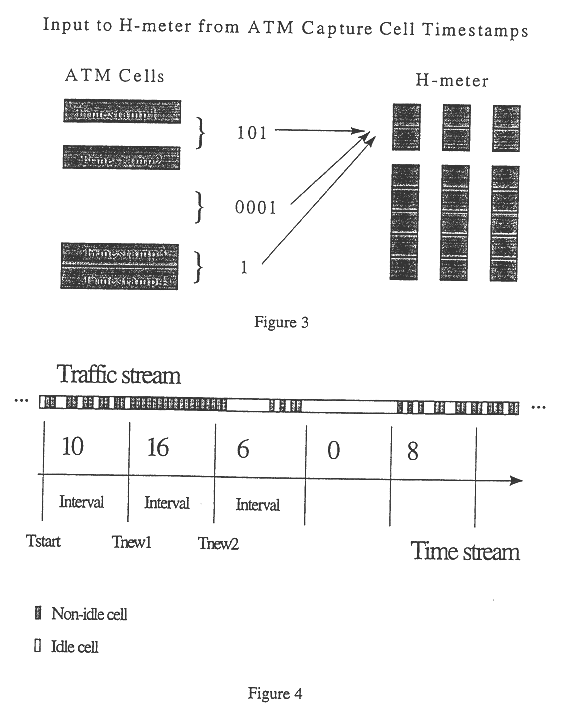Method for real-time traffic analysis on packet networks
a packet network and traffic analysis technology, applied in transmission systems, transmission, time-division multiplexing selection, etc., can solve the problems of inability to successfully apply traditional analysis techniques, and the methods that have been proposed for the analysis of traffic in packet networks are impractical for real-time implementation
- Summary
- Abstract
- Description
- Claims
- Application Information
AI Technical Summary
Problems solved by technology
Method used
Image
Examples
Embodiment Construction
Referring to FIG. 1, the data is processed and organized by an ordered series of bins, and stored in an ordered array of vectors in such a way that information can be derived regarding traffic at different time scales. Each bin consists of a primary accumulator and a secondary accumulator. A series of bits representing the presence "1" or absence "0" of a cell or packet in successive transport locations of a traffic stream is fed into the primary accumulator of the first bin of the series. The bins are labelled with the integers {1,2, . . . ,m} and the accumulators are labelled by pairs of integers of the form (i,j) so that the accumulators in bin i are labelled (i,1) and (i,2) for the primary and secondary accumulators (respectively) of bin i. Each accumulator has a number of memory locations and the number of memory locations in accumulator (i,j) is represented by p.sub.j.
When an accumulator receives an integer, it stores the integer in the next available (i.e. empty) memory locat...
PUM
 Login to View More
Login to View More Abstract
Description
Claims
Application Information
 Login to View More
Login to View More - R&D
- Intellectual Property
- Life Sciences
- Materials
- Tech Scout
- Unparalleled Data Quality
- Higher Quality Content
- 60% Fewer Hallucinations
Browse by: Latest US Patents, China's latest patents, Technical Efficacy Thesaurus, Application Domain, Technology Topic, Popular Technical Reports.
© 2025 PatSnap. All rights reserved.Legal|Privacy policy|Modern Slavery Act Transparency Statement|Sitemap|About US| Contact US: help@patsnap.com



